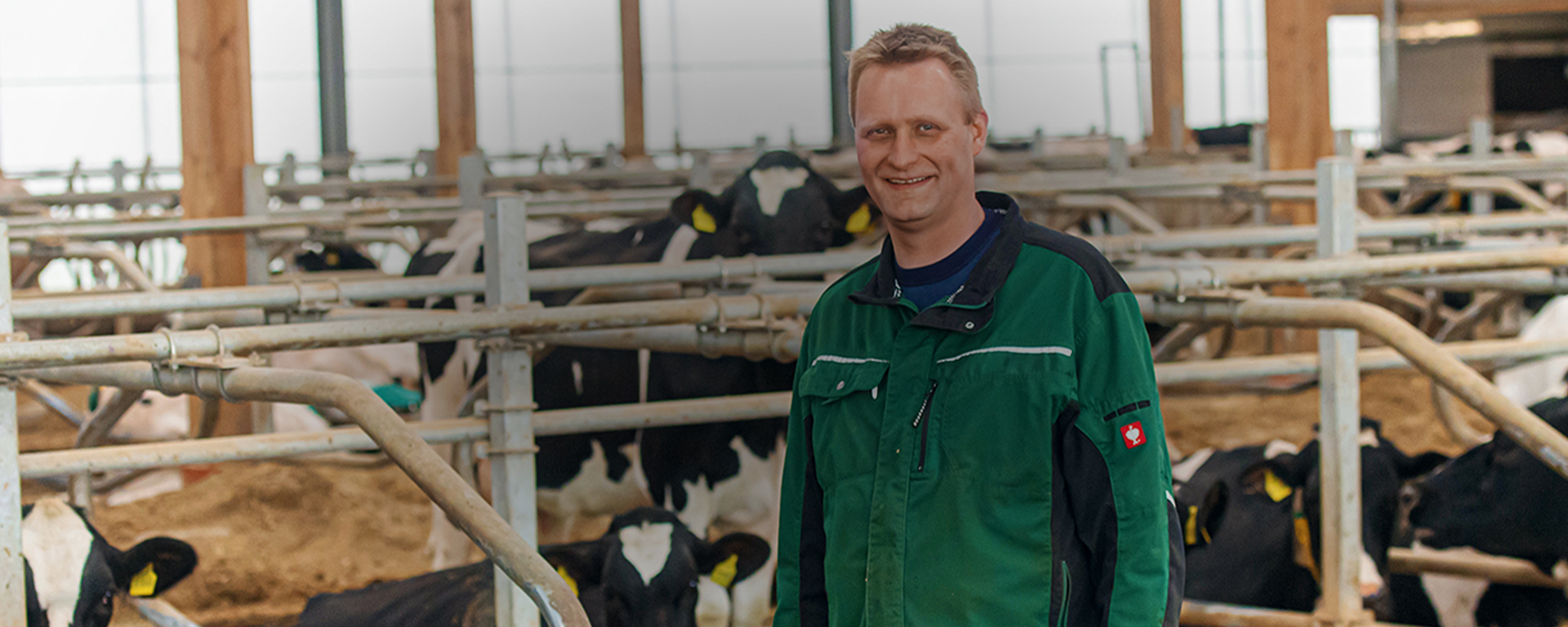“We want to take part in market developments ourselves”


I’s Tuesday morning so a trading session is on the agenda, on Fixed Price, DMK’s platform for hedging milk prices. In Oldendorf near Stade in Lower Saxony, farmer Söhnke Schlichtmann is preparing to sell part of his milk at a fixed price. At the start, trading milk was new and exciting, but now the trading process has become part of his regular routine, every second and fourth Tuesday of the month.
Fixed Price was developed with the help of a pilot group which included Söhnke Schlichtmann’s father Hermann. It’s a simple and secure hedging model for all members of the cooperative. Söhnke Schlichtmann was one of the first farmers active on Fixed Price right from the very beginning. Since then, he has regularly hedged parts of his milk volumes at a fixed price on the online platform, when the price suits his hedging strategy. “Years ago, my father and I looked at the stock market to see if we could sell our milk ourselves,” he says. He no longer wants to be a supplier who fulfills predefined conditions, but wants to take part in market developments himself, he says. “But we soon realized that trading milk independently on the stock exchange is highly complex and we would need a lot of liquidity to make it happen.” This was not feasible for his farm. “That’s why we were happy our dairy took this up and we were glad to be part of the process through the pilot group.”
He is still interested in the issue, of course, and prepares extensively for the trading sessions which take place every second and fourth Tuesday of the month.
“It’s great that you can put in an offer up until 10 p.m.”
He now has an established a routine. He knows his farm’s production costs, with its 530 cows. He reads the trade press and monitors the milk value on the Kiel exchange. On each trading day, he looks again in the morning to check whether the fixed price offered makes sense for his farm. For him, what matters most is not getting the highest price but having the security to plan, and balancing the difference between the peaks and troughs in the milk price, something the fixed price offers at a time of market volatility. His father is thinking over exactly the same questions at the same time, so they talk during their lunch break and occasionally call their business adviser. Then they reach a decision and submit an offer online during the course of the day. “It’s great that you can put in an offer up until 10 p.m., so we are totally flexible,” he says. “The platform is very straightforward so everyone can understand it, so that part really doesn’t take much time at all.”


A routine process – Farmer Söhnke Schlichtmann has integrated the milk hedging process into his daily life.
Thanks to his routine, he can wrap up the process quickly and move on to other tasks. Because even though it is important to Söhnke Schlichtmann to focus on the dairy market and manage his income, there’s also his daily farm work to take care of. For him, that is exactly why Fixed Price is so attractive. “Twice a month, I really focus on it, whereas if I was trading on the exchange independently, I would constantly have to follow the prices. That would be too nervewracking,” he says. With Fixed Price, he has to wait and see how much of the volume he offers is actually hedged, but he knows that the price is set and that is exactly what he will receive on his milk bill for that particular month, without any other costs or deductions.
The fixed price that is offered on Fixed Price replaces the DMK base price, and is paid for the actual volume of milk delivered in the month agreed. It means all of the price corrections, surcharges, deductions and discounts, such as for fat and protein, that are specific to his farm need to be added to the fixed price. DMK prices all of the other costs associated with the system or created in the process of the transaction into the fixed price, as well as the financing costs and basic risk. Milk producers who don’t hedge face no further costs. He recommends his colleagues take a closer look at hedging. “There’s really no need to be afraid. You can approach it at your own pace and decide for yourself whether you want to offer any milk volumes. It is not a guarantee for high prices, it’s a hedging tool.”
“You can approach it at your own pace and decide whether you want to offer any milk volumes.”
Participating also makes sense in terms of investment, he says. “Bankers see this as a positive thing, that you engage with this and have a security that can cover business costs and also repayments. We milk producers are also going to need that security in the future.” Twenty years ago, milk prices were stable, says the farmer. Now they fluctuate a lot. “Fixed price helps us to balance out these fluctuations.”